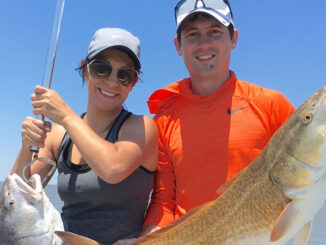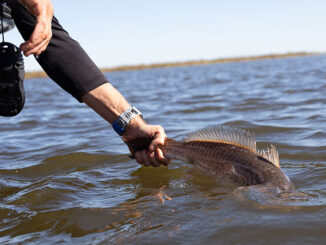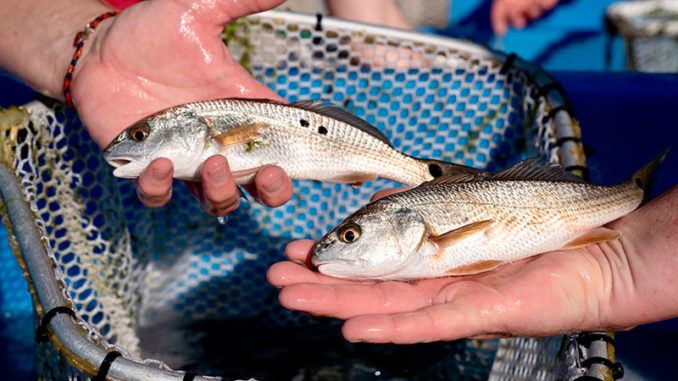
New program aimed at boosting Louisiana redfish populations
Louisiana freshwater anglers have benefitted from the state’s fish hatcheries and stocking programs for a century.
Four freshwater hatcheries operated by the Louisiana Department of Wildlife and Fisheries produce largemouth bass, crappie, a variety of sunfish, catfish and even paddlefish.
To date, the state’s fish stocking efforts have been limited to freshwater species and select lakes, rivers and basins, especially those where hurricanes have caused widespread fish kills.
But, that could change by the end of this year and into 2024 with the Department issuing the state’s first-ever permit to stock hatchery-raised redfish.
The permit was granted in July to the Recreational Fisheries Research Institute, a non-profit fisheries science and advocacy group headed by former Wildlife and Fisheries Assistant Secretary for Fisheries Randy Pausina.
Initial stocking
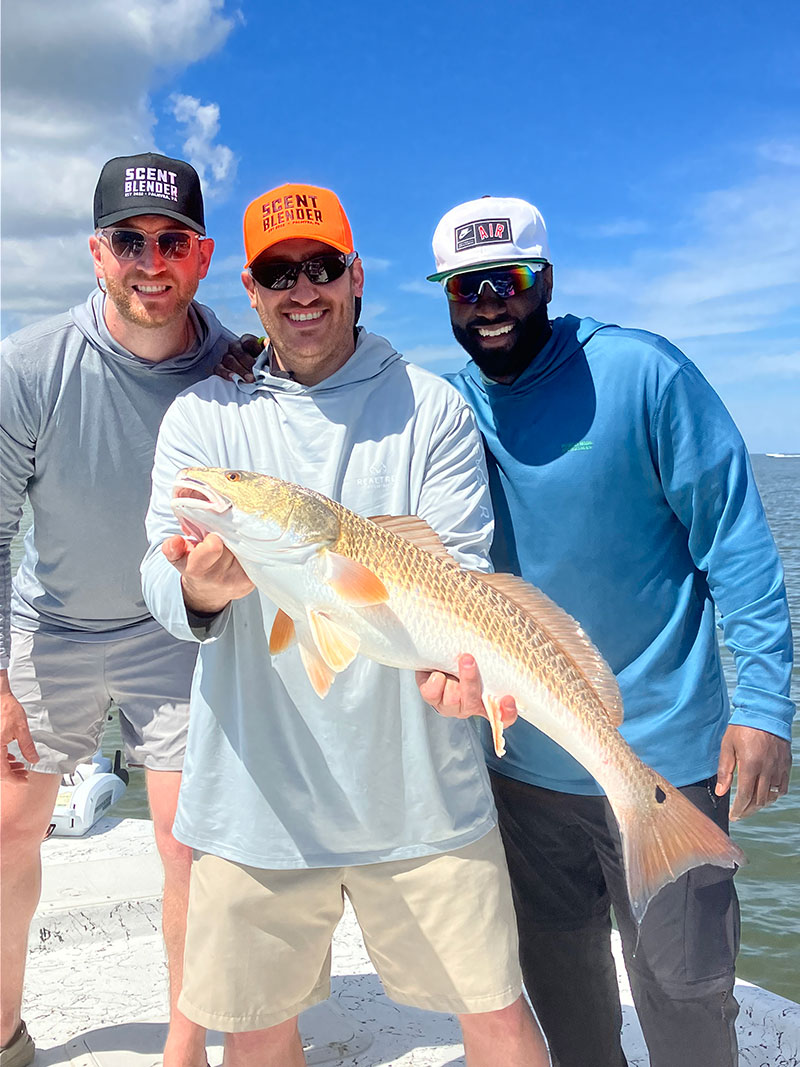
The initial stocking will be limited to 10,000 fingerling redfish purchased from a hatchery in Texas and introduced only into Calcasieu Lake. Pausina said, depending on the success of the initial stocking, he expects to try to grow the program to include more fish and other basins across Louisiana’s coast.
“We are going to try 10,000 at first because it’s what we’ve been able to raise the money to buy, but I think at some point Louisiana could be stocking a million fish or more and expand the program to speckled trout, flounder, black drum,” he said. “We’re going to go where the science leads us and focus on areas in need where we can have the most positive impact.”
The stocking effort is based largely on the success of more than 30 years of redfish stocking efforts in neighboring Texas and decades-old programs in California, Oregon and Washington to supplement salmon and steelhead trout and white sea bass.
Selective stocking
Christopher Mace, director of the fisheries enhancement program for the Texas Parks and Wildlife Department’s Coastal Fisheries Division said extensive research has been conducted to determine the efficacy of releasing redfish fingerlings into various basins along the Texas coast. In some cases, hatchery raised redfish can be as much as six percent of the redfish landed in a particular basin, though the intent is not to significantly increase the number of fish anglers are catching.
“Stocking of fingerlings is highly variable between bays and between years,” Mace said. “But if care is taken in handling the fingerlings and choosing the best stocking sites, they become a significant part of the fishery. It’s supplementary to natural production and recruitment, not used as a put and take alternative to overfishing.”
While Louisiana’s largemouth bass stocking program has focused both on improving growth rates by introducing faster growing and larger Florida-strain fish into native, northern strain stock and helping areas recover from fish kills, Pausina said the goal with redfish stocking is not to change the genetics of the wild stock, just augment the population to increase productivity.
“The best application is likely to help areas recover from weather anomalies like hurricanes, abnormal flooding and freezes that can wipe out half or more of the wild stocks or significantly affect spawning and recruitment,” he said. “We aren’t changing the genetics. Past studies have shown there are genetic differences between redfish east of the Mississippi River and west of the river and we are going to preserve the unique genetics of those stocks with the hatchery fish.”
Help needed
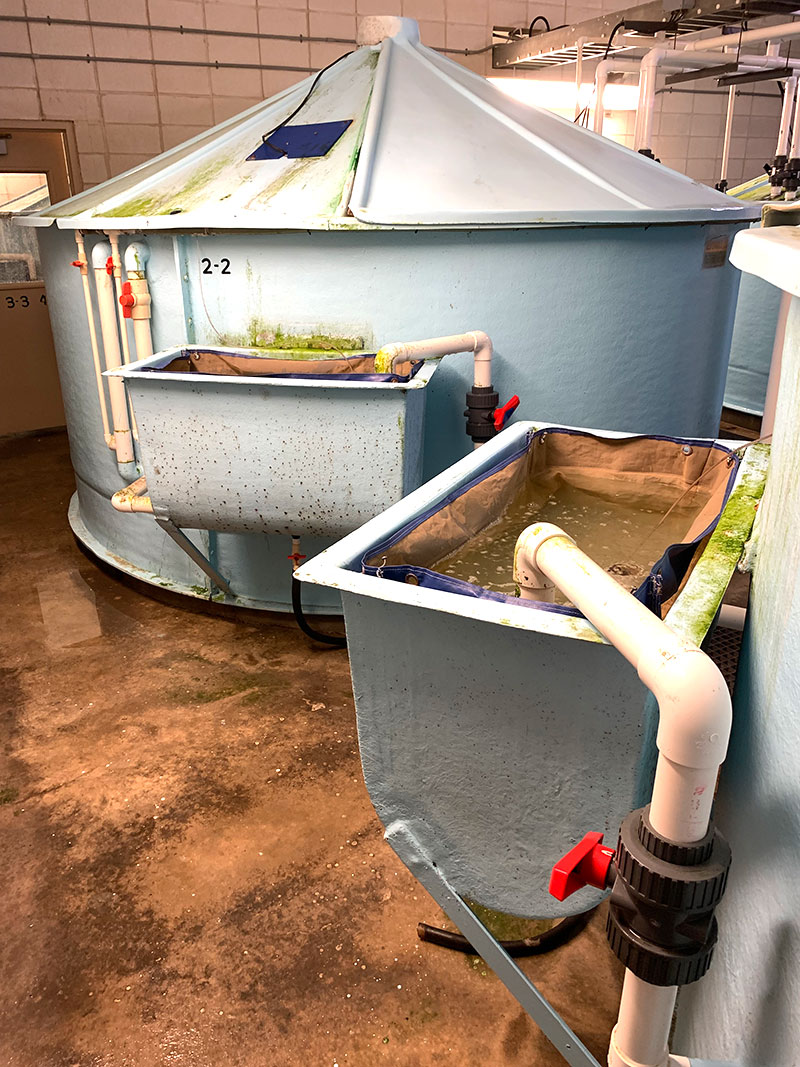
Mace said Texas’ program has benefitted greatly from engagement with recreational fishermen and conservation organizations that raise money to help operate hatcheries and conduct research.
“Our organization has been talking with our partners in Texas for some time about the investments they’ve made in hatcheries and the successes they’ve seen,” said David Cresson, executive director of the Coastal Conservation Association Louisiana. “We are supportive of bringing stocking programs to Louisiana and are committed to helping raise the funds needed to make them successful.”
Significant advancements in monitoring the growth, movement and impact to wild stocks of hatchery fish have been made in the last decade, Pausina said. Before the development of DNA and genetic monitoring, hatchery fish were tagged or marked physically by clipping fins which can make it difficult for biologists to fully grasp the positive impacts of hatchery fish on the larger stock.
Anglers can help
Similar to recreational fishermen helping biologists track caught and released fish through tagging, Pausina said anglers can help gather the science on stocking efforts by sending in samples of the fish they catch to be tested for genetic markers.
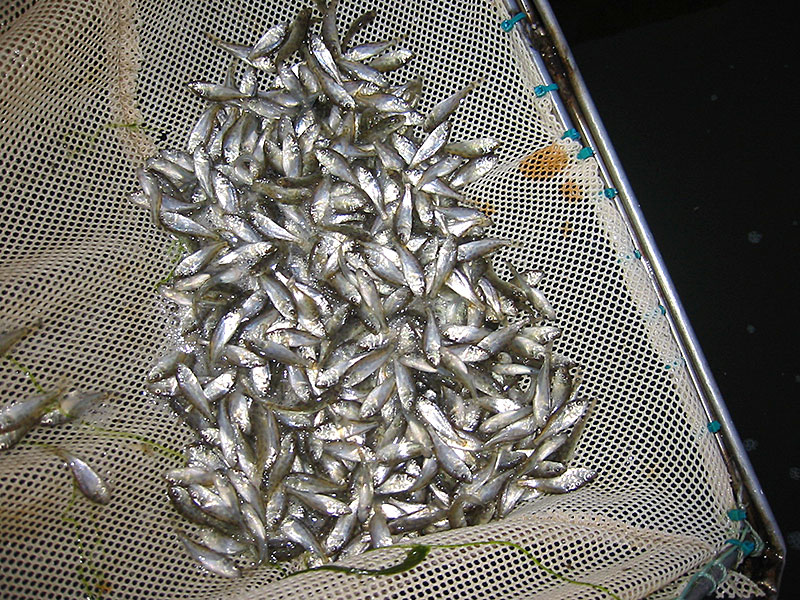
“All fishermen would have to do is clip a small part of a fin or the tail and drop it at a lab and we can test the DNA to see if the fish are pure hatchery fish or if their genetics are present in the stock,” he said.
The initial permit is set to expire at the end of 2023 and will have to be renewed for additional stocking next year and beyond. Pausina said he will continue working with non-profit conservation groups, anglers and other private companies to raise the funds needed to expand the program.
“Louisiana really has a chance to be a leader on saltwater stocking efforts because we are starting our program with the best available science and developments in genetic tracking,” he said. “I see great potential here for partnerships with other states, federal agencies, non-profits and all recreational fishermen.”
